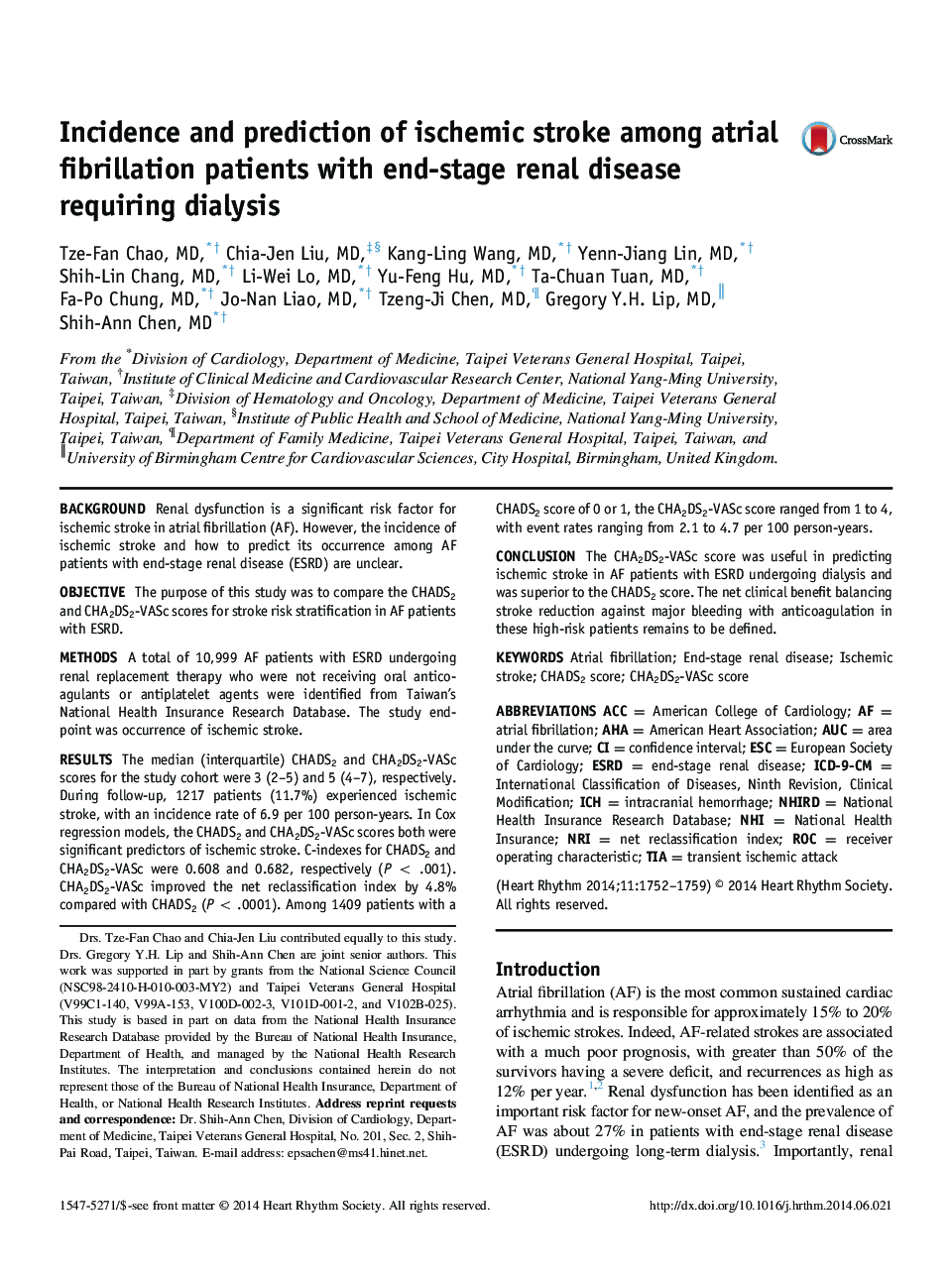| Article ID | Journal | Published Year | Pages | File Type |
|---|---|---|---|---|
| 2921919 | Heart Rhythm | 2014 | 8 Pages |
BackgroundRenal dysfunction is a significant risk factor for ischemic stroke in atrial fibrillation (AF). However, the incidence of ischemic stroke and how to predict its occurrence among AF patients with end-stage renal disease (ESRD) are unclear.ObjectiveThe purpose of this study was to compare the CHADS2 and CHA2DS2-VASc scores for stroke risk stratification in AF patients with ESRD.MethodsA total of 10,999 AF patients with ESRD undergoing renal replacement therapy who were not receiving oral anticoagulants or antiplatelet agents were identified from Taiwan’s National Health Insurance Research Database. The study end-point was occurrence of ischemic stroke.ResultsThe median (interquartile) CHADS2 and CHA2DS2-VASc scores for the study cohort were 3 (2–5) and 5 (4–7), respectively. During follow-up, 1217 patients (11.7%) experienced ischemic stroke, with an incidence rate of 6.9 per 100 person-years. In Cox regression models, the CHADS2 and CHA2DS2-VASc scores both were significant predictors of ischemic stroke. C-indexes for CHADS2 and CHA2DS2-VASc were 0.608 and 0.682, respectively (P < .001). CHA2DS2-VASc improved the net reclassification index by 4.8% compared with CHADS2 (P < .0001). Among 1409 patients with a CHADS2 score of 0 or 1, the CHA2DS2-VASc score ranged from 1 to 4, with event rates ranging from 2.1 to 4.7 per 100 person-years.ConclusionThe CHA2DS2-VASc score was useful in predicting ischemic stroke in AF patients with ESRD undergoing dialysis and was superior to the CHADS2 score. The net clinical benefit balancing stroke reduction against major bleeding with anticoagulation in these high-risk patients remains to be defined.
